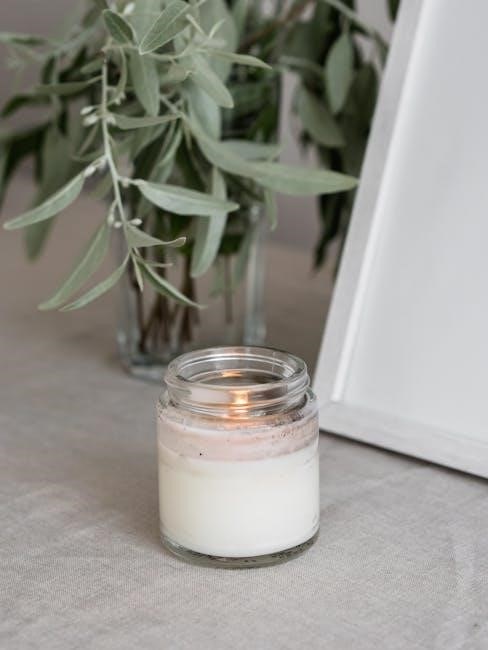Crafting the perfect candle requires understanding the nuances of wick selection. This guide illuminates the crucial factors, from wax type to container size, ensuring a clean and fragrant burn, and optimizing your candle-making projects.
Candle wicks are the unsung heroes of a beautifully burning candle. Selecting the right wick is paramount for optimal performance. This guide delves into the essential aspects of candle wicks, offering insights for both beginners and experienced candle makers.
A candle wick’s primary function is to draw molten wax up to the flame, fueling the combustion process. The wick’s size, shape, and material significantly impact the burn rate, scent throw, and overall candle lifespan. An improperly sized wick can lead to problems such as tunneling (wax remaining on the sides), excessive smoking, or a weak flame.
Understanding the properties of different wick types, including cotton, linen, and even wood, is crucial for achieving the desired candle characteristics. Factors such as wax type, fragrance load, and container size must be considered when choosing a wick.
This introduction provides the foundation for navigating the complexities of wick selection, ensuring your candles burn cleanly, evenly, and beautifully.
Types of Candle Wicks
The world of candle wicks offers a diverse range of options, each with unique characteristics that influence a candle’s burn performance. Understanding these differences is key to selecting the perfect wick for your project.
Cotton wicks are a popular choice, known for their consistent burn and versatility. Within the cotton family, variations like flat braided, square braided, and cored wicks cater to different wax types and container sizes.
Linen wicks, similar to cotton, provide a natural option. Wood wicks offer a distinctive crackling sound and a wider flame, creating a cozy ambiance. However, they can be more challenging to work with and may require specific wax blends.
Cored wicks, often featuring a paper or metal core, maintain rigidity, particularly useful in pillars and larger candles. The choice depends on desired aesthetics, burn characteristics, and compatibility with the wax and fragrance load. Ultimately, experimenting with different types is essential to find the ideal match.
Cotton Wicks
Cotton wicks are a widely favored choice in candle making, celebrated for their natural composition and reliable performance across various candle types. Their versatility stems from the different ways cotton fibers are constructed, leading to distinct burn characteristics.
Flat braid wicks are known for their consistent and controlled burn, often preferred for paraffin and soy waxes. Square braid wicks, a more robust option, are well-suited for beeswax candles.
The size of the cotton wick is crucial; a wick too small results in tunneling, while a wick too large produces excessive smoke and a large flame. Factors like wax type, fragrance load, and container diameter significantly influence the appropriate wick size.
Properly selected cotton wicks ensure a clean, even burn, maximizing fragrance throw and minimizing soot. Experimentation and careful observation are key to achieving optimal results with cotton wicks.
Square Wicks
Square wicks stand out due to their unique construction, typically braided or knitted in a square or rounded form. This design provides enhanced rigidity and a slightly different burning behavior compared to flat wicks, making them suitable for specific types of waxes and candle designs.
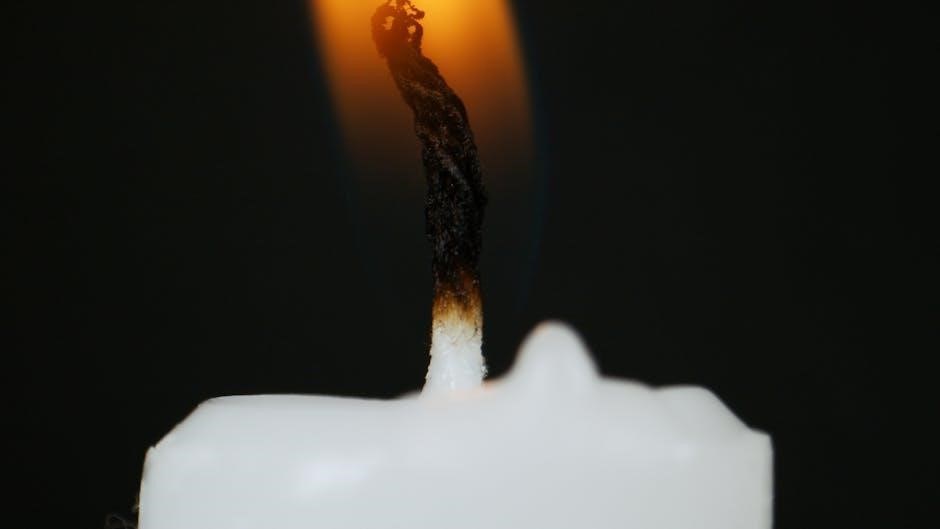
These wicks tend to curl as they burn, which helps to keep the flame at a manageable height and promotes a more complete combustion of the wax. They are a popular choice for thicker waxes like beeswax, which require a more robust wick to maintain a steady flame and melt pool.
Square wicks are known for their ability to handle higher fragrance loads without excessive smoking or soot production. Selecting the correct size of square wick depends on the diameter of the candle container and the properties of the wax blend being used. Testing is essential to ensure optimal performance.
Factors Affecting Wick Choice
Selecting the right wick for your candle project involves considering several key factors that influence how the candle burns. These factors interact with each other, making wick selection a nuanced process that often requires experimentation.
The primary factors include the type of wax used, as different waxes have varying melting points and viscosities. The size and shape of the container also play a crucial role, as they determine the diameter of the melt pool that the wick needs to support. Additionally, the fragrance load, or the percentage of fragrance oil added to the wax, affects how the candle burns.
Other considerations include the container material and color, as these can affect heat distribution, and environmental factors like room temperature and airflow. Understanding these variables is essential for achieving a clean, consistent, and safe burn.
Wax Type
The type of wax you choose significantly impacts wick selection. Different waxes have varying melting points and viscosities, affecting how the wick draws fuel to the flame. Paraffin wax, known for its hotter burn, requires wicks like CD and HTP series.
Soy wax, being more viscous, often needs wicks several sizes larger than recommended for paraffin. Beeswax, another viscous option, also demands careful wick consideration.
Coconut wax and other blended waxes have their own unique burn characteristics that influence wick choice; Experimentation is key to finding the perfect wick for each wax type, ensuring a clean and even burn. Consider the wax’s properties to optimize your candle’s performance and fragrance throw.
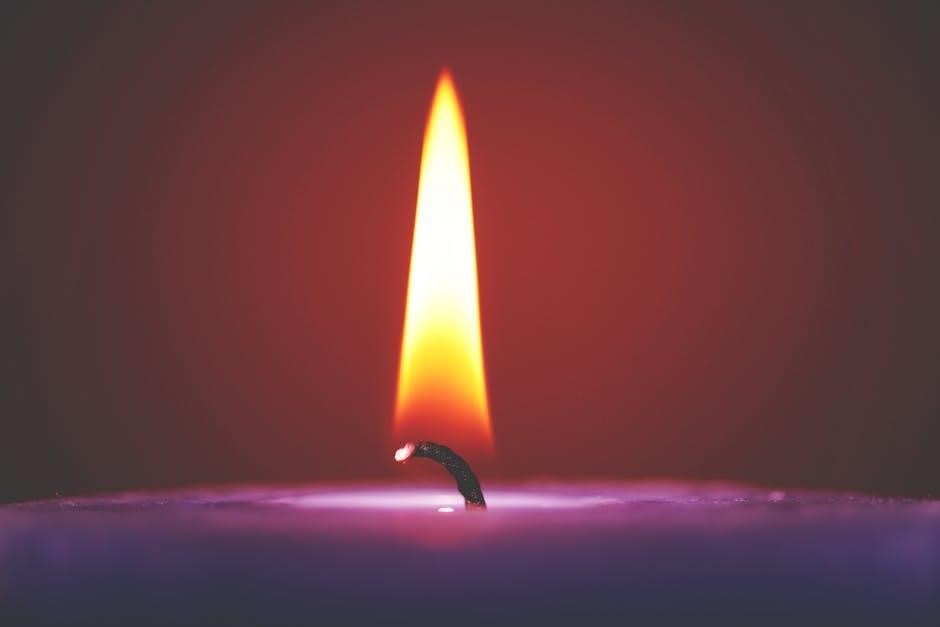
Container Size and Shape
The dimensions of your candle container play a crucial role in wick selection. The diameter, in particular, dictates the wick size needed for a full melt pool. Smaller containers require smaller wicks to prevent overheating, while larger diameters demand larger wicks or multiple wicks to ensure the wax melts evenly.
The shape of the container also matters. Wider containers might benefit from multiple wicks, especially if the diameter exceeds 3.5 inches. Tapered or unusually shaped containers may require more testing to find a wick that burns efficiently without leaving wax on the sides.
Always measure the inside diameter of the container to accurately determine the appropriate wick size. This measurement serves as the foundation for selecting a wick that promotes optimal burning characteristics.
Fragrance Load
The amount of fragrance oil added to your wax, known as the fragrance load, significantly impacts wick performance. Fragrance oils can affect how the wax burns, potentially clogging the wick or altering the flame’s behavior.
Higher fragrance loads often require a larger wick size to maintain a consistent burn. The fragrance oil dilutes the wax, making it necessary for the wick to draw more fuel to sustain the flame. Conversely, lower fragrance loads might necessitate a smaller wick to prevent excessive heat and sooting.
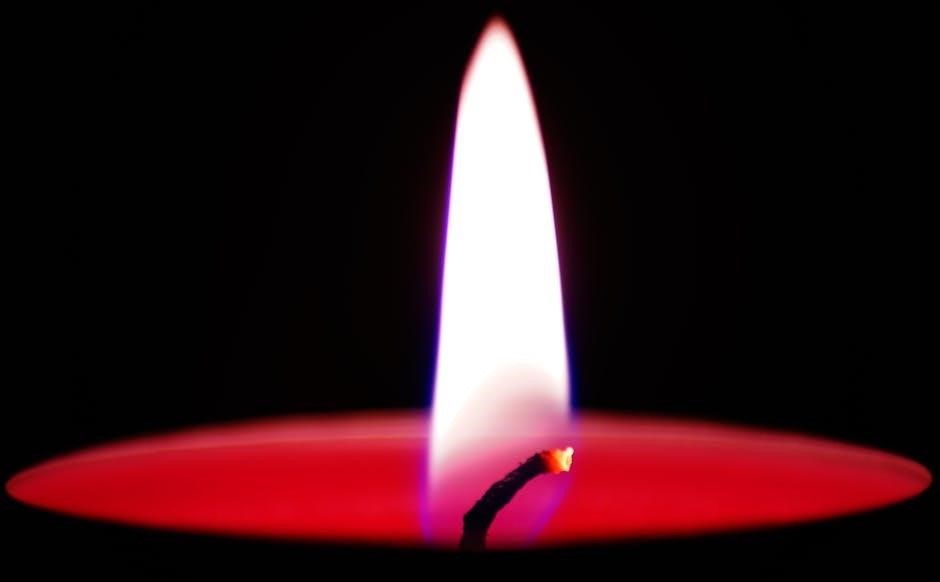
It’s crucial to conduct burn tests with varying fragrance loads to determine the optimal wick size for each specific fragrance and wax combination. Documenting your findings will help you achieve consistent and high-quality candle burns.
Wick Sizing Charts and Guides
Wick sizing charts and guides are essential tools for candle makers, offering a starting point for selecting the appropriate wick size based on container diameter and wax type. These charts provide general recommendations; however, they should not be considered definitive.
It’s crucial to remember that every candle project is unique, and factors such as fragrance load and wax blend can significantly influence wick performance. These charts often categorize wicks by series (e.g., CD, ECO, LX) and provide recommended container diameter ranges for each size.
Always use these charts as a guideline, not a rule. Burn testing remains the most reliable method for determining the perfect wick size for your specific candle formulation. Record detailed notes during testing to refine your wick selection process and achieve optimal results.
Burn Testing and Wick Selection
Burn testing is the cornerstone of successful wick selection. It involves lighting candles with different wick sizes within the same wax, fragrance, and container to observe their burning characteristics.
Observe the melt pool; it should reach the edge of the container within a few hours. A wick that’s too small will tunnel, leaving wax on the sides, while one that’s too large will produce excessive smoke and a large flame.
Document your findings meticulously. Note the flame height, melt pool diameter, soot production, and overall burn time. Compare the performance of each wick size to determine which one provides the cleanest, most efficient burn for your specific candle recipe. Patience and careful observation are key to mastering this process.
Troubleshooting Wick Problems
Candle making can be tricky, and wick problems are a common occurrence. Tunneling, where the candle burns down the center leaving wax on the sides, often indicates a wick that is too small.
Conversely, excessive smoking and a large, flickering flame suggest a wick that is too large. Adjusting wick size is often the first step in resolving these issues.
Another common problem is mushrooming, where carbon builds up on the wick’s tip. This can be caused by fragrance oils or additives. Try a different wick series or reducing the fragrance load.
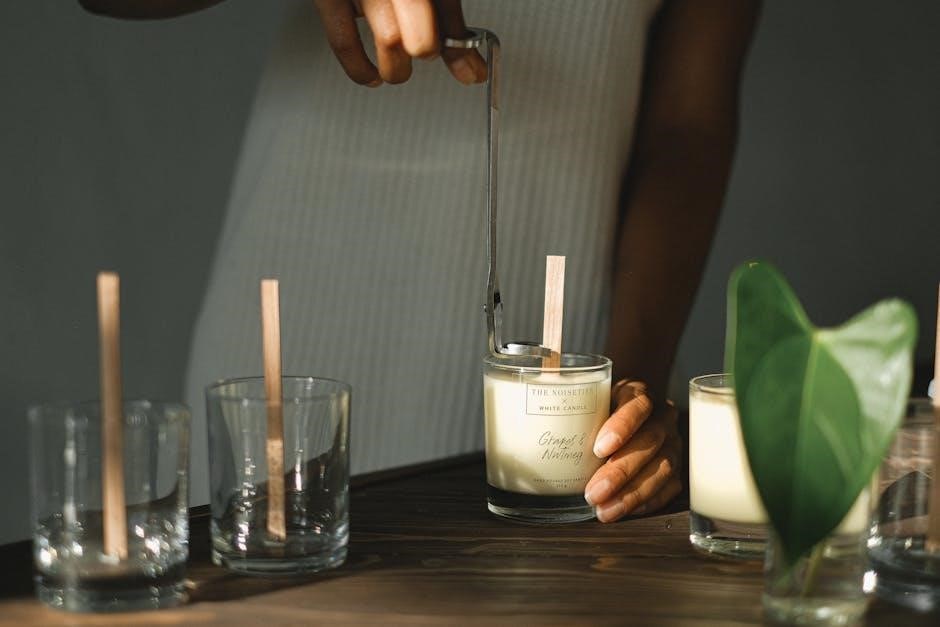
If the candle extinguishes prematurely, it may be due to a wick that is drowning in wax. Experiment with wicks that have a tighter braid. Thorough testing and documentation are crucial for effective troubleshooting.
Candles in Large Containers
Creating candles in large containers, typically those exceeding 3.5 inches in diameter, presents unique challenges. Single wicks may struggle to create a full melt pool, leading to tunneling and wasted wax.
One effective solution is to employ multiple wicks, strategically spaced to distribute heat evenly across the surface. When double-wicking, select wick sizes appropriate for half the container’s diameter. Experimentation is key to finding the optimal wick combination.
Consider the wax type and fragrance load, as these factors influence burn characteristics. Higher viscosity waxes may necessitate larger wicks. Burn testing is crucial to ensure a consistent and complete melt pool, preventing uneven burning and maximizing fragrance throw.
Proper wick placement and careful monitoring during initial burns are essential for success with large container candles.
Resources for Candle Wick Selection
Navigating the world of candle wicks can be overwhelming, but numerous resources are available to aid your selection process. Online wick guides and sizing charts offer recommendations based on container diameter and wax type.
Candle-making suppliers often provide detailed product descriptions and technical specifications for their wicks, including burn test data and recommended usage guidelines. Forums and online communities dedicated to candle making offer a wealth of information and shared experiences.
Consider purchasing sample packs of various wick sizes and types to conduct your own burn tests. Taking meticulous notes during testing is crucial for identifying the ideal wick for your specific candle project.
Consulting with experienced candle makers or attending workshops can provide valuable insights and hands-on guidance. Don’t hesitate to leverage these resources to enhance your understanding and improve your wick selection skills, leading to beautifully crafted and well-performing candles.
